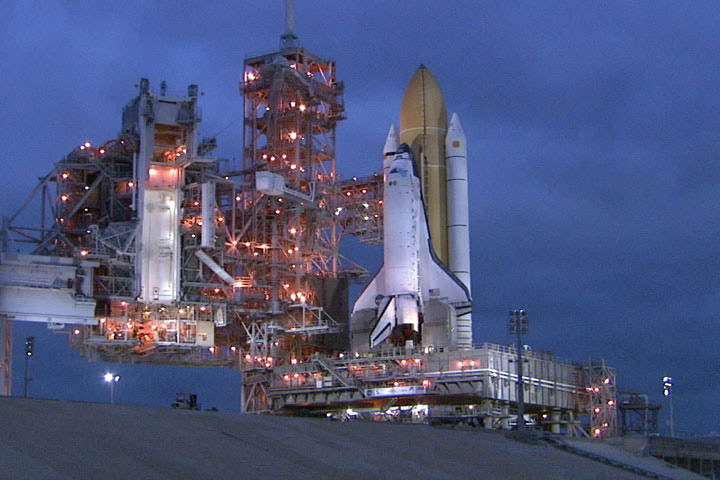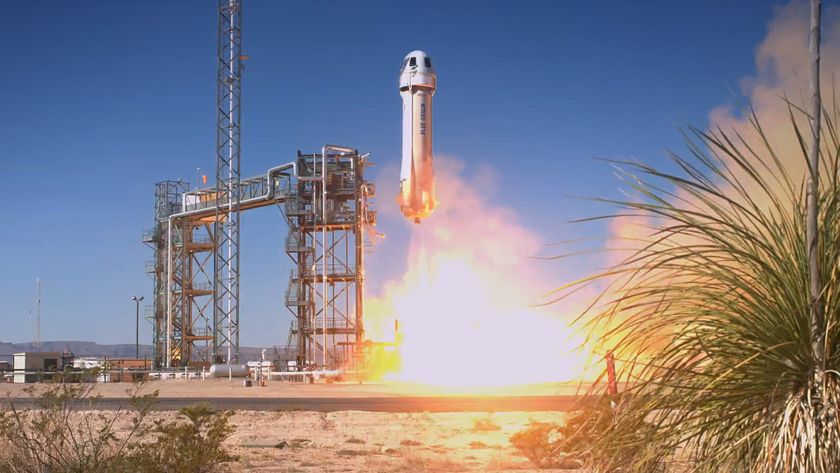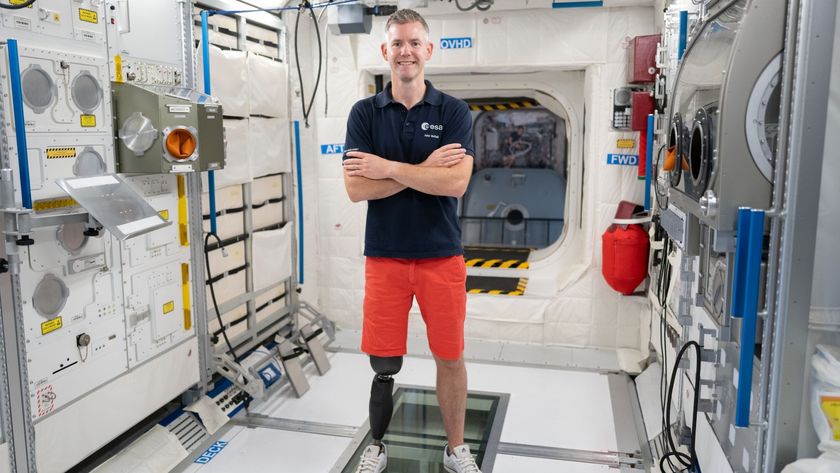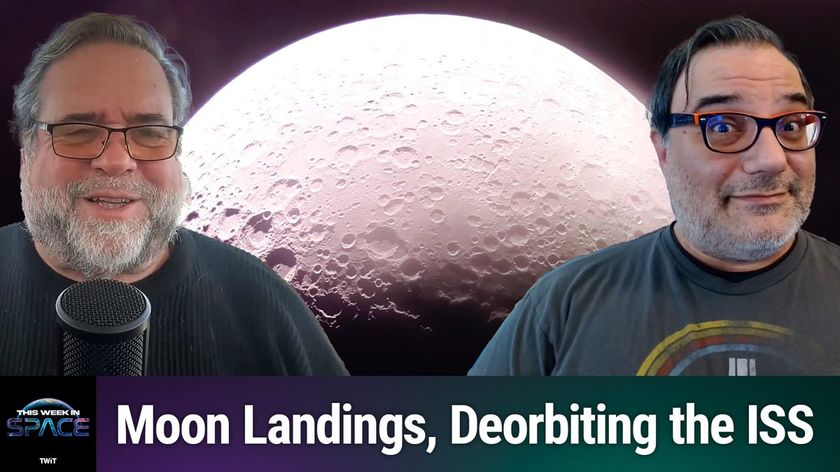NASA Moves Space Shuttle Discovery to Launch Pad

NASA hauled the space shuttle Discovery out to itsseaside launch pad in Florida early Wednesday to prepare for a planned April 5blastoff.
The massive move set Discovery up for its second to lastmission ever as NASA prepares to retire its space shuttlefleet later this year. Discovery is due to launch April 5 at 6:21 a.m. EDT(1021 GMT) to deliver new supplies and equipment to the International SpaceStation.
NASA began hauling the shuttle Discovery to the seaside Launch Pad 39A at theKennedy Space Center in Florida just before midnight. The trip took more thansix hours.
??It?s a great time to be in Florida,? Discoverycommander Alan Poindexter told reporters Monday after arriving at thespaceport. ?We?ve been training really hard and are just so proud of the folksdown here getting [Discovery] ready for flight.?
Poindexter and the rest of Discovery?s seven-astronautcrew are spending the week at the Kennedy Space Center for final trainingsessions with the shuttle and its cargo.
A crew of around 30 technicians accompanied Discovery?smove to the launch pad, which used NASA?s massive Apollo-era crawler carrier vehiclebuilt to move the combined 12 million-pound (5.4 million-kg) load of itself anda space.
But NASA also invited more than 200 shuttle workers andtheir families to watch Discovery make its way to the launch pad. The visitorswere given passes to bring their families and watch the spaceship they?veworked on for years make its penultimate trip to the launch pad, NASAspokesperson Allard Beutel told SPACE.com.
Get the Space.com Newsletter
Breaking space news, the latest updates on rocket launches, skywatching events and more!
?It?s a special employee event,? Beutel said. ?They?reletting employees and their families, folks who worked on the shuttle theirentire lives, get a chance to see a rollout.?
NASA plans to retire its three aging space shuttles inSeptember after the final mission ? also aboard Discovery ? returns to Earthfrom the space station.
There are four shuttle flights left, including Discovery?supcoming STS-131 mission. NASA has flown 130 shuttle missions since the firstflight in 1981. The most recent mission was aboard Endeavour, which returned fromthe space station on Feb. 21 after delivering a new room and stunning viewportthat allows astronauts on the station to see Earthfrom space like never before.
NASA initially planned to move Discovery to its launchpad on Tuesday, but the threat of rain and lightning forced a one-day delay.
Shuttle technicians currently have about a week of cushiontime in their schedule to prepare Discovery for flight, so the delayed trek to thelaunch pad should not affect plans for the shuttle?s April 5 blastoff, Beutelsaid.
The shuttle?s STS-131 was also previously scheduled tolaunch on March 18, but cold weather in Florida kept Discovery insideits hangar for longer than expected.
That delay forced NASA to wait until warmer weather arrivedbefore moving the shuttle to the cavernous Vehicle Assembly Building to be attachedto its 15-story external tank and twin solid rocket boosters.
As a result, the space agency pushed back Discovery?slaunch to April 5 due to the weather and in order to avoid a space traffic jamat the space station, which will see a crew change at the end of March andearly April.
Discovery is slated to fly a 13-daymission to the space station to deliver a cargo module filled with tons ofscience equipment and other supplies for the orbiting laboratory. Threespacewalks are planned for the mission to upgrade and maintain the station?ssystems.
Poindexter and his crew will speak with reporters about theirmission on Thursday and then spend Friday staging a dress rehearsal of launchday, capping it with an emergency escape drill.
The training session is a standard one for every missionand is called the Terminal Countdown Demonstration Test.
?We?re really looking forward to our dress rehearsal forlaunch,? Poindexter said.
Meanwhile, NASA is also gearing up for a launch of adifferent kind this week.
An unmanned Delta 4 rocket is due to launch the newGOES-P weather satellite for NASA and the National Oceanic and AtmosphericAdministration (NOAA). The new satellite storm is designed to track storm developmentand weather conditions on Earth.
Launch of GOES-P was initially slated to Tuesday, but hasbeen delayed due to weather and technical concerns. Beutel said both issueshave been resolved, giving GOES-P a good chance to fly Thursday.
?The weather looks very good for a Thursday launch,? hesaid.
- Images- Space Station's New Window on the World
- OneLast Blast: NASA Performs Final Shuttle Solid Rocket Test
- Video Show- Riding the Space Shuttle
Join our Space Forums to keep talking space on the latest missions, night sky and more! And if you have a news tip, correction or comment, let us know at: community@space.com.

Tariq is the Editor-in-Chief of Space.com and joined the team in 2001, first as an intern and staff writer, and later as an editor. He covers human spaceflight, exploration and space science, as well as skywatching and entertainment. He became Space.com's Managing Editor in 2009 and Editor-in-Chief in 2019. Before joining Space.com, Tariq was a staff reporter for The Los Angeles Times covering education and city beats in La Habra, Fullerton and Huntington Beach. In October 2022, Tariq received the Harry Kolcum Award for excellence in space reporting from the National Space Club Florida Committee. He is also an Eagle Scout (yes, he has the Space Exploration merit badge) and went to Space Camp four times as a kid and a fifth time as an adult. He has journalism degrees from the University of Southern California and New York University. You can find Tariq at Space.com and as the co-host to the This Week In Space podcast with space historian Rod Pyle on the TWiT network. To see his latest project, you can follow Tariq on Twitter @tariqjmalik.
Most Popular




